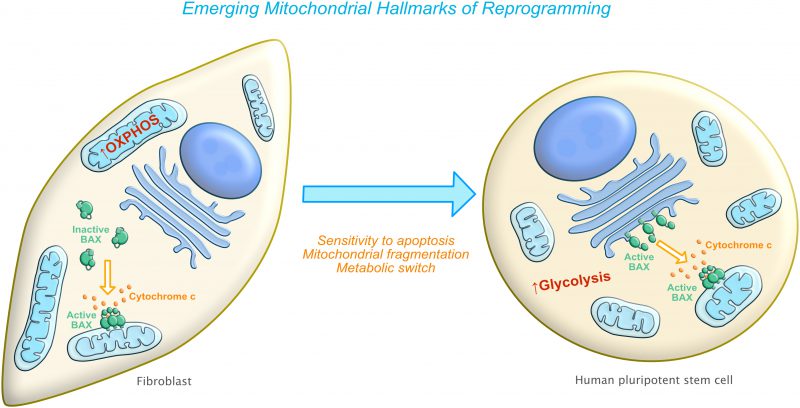Back to article: Remodeling of mitochondrial morphology and function: an emerging hallmark of cellular reprogramming
FIGURE 1: Emerging mitochondria-related hallmarks of reprogramming. Left side: Differentiated cells (such as fibroblasts) have an elongated mitochondrial network with a preference for oxidative phosphorylation (OXPHOS) as a source of energy and are relatively resistant to apoptosis stimuli. Right side: After reprogramming, cells now have a fragmented mitochondrial network with a switch to using glycolysis as a preferred bioenergetic source. Cells become increasingly sensitive to cell death due to at least two main mechanisms: increased mitochondrial priming and pre-activated BAX.

